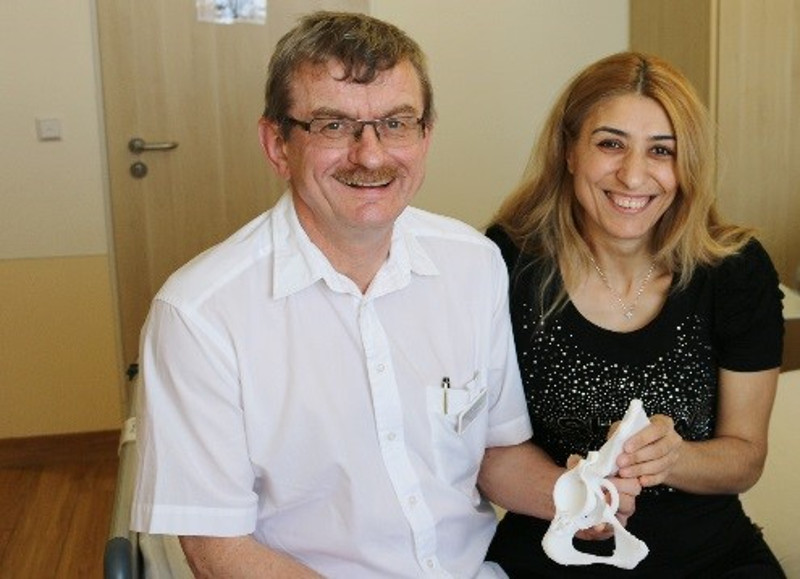Succeeding where two other operations had failed before, a 3D printed hip implant has been used in corrective surgery for a patient at the HELIOS Clinic in Hildesheim, Germany. The device has been made in consultation with Materialise, harnessing the company’s aMace solution – the first software platform to use “scientifically validated simulation technologies” for custom-made implants.

Individual, personalized care
Antzelina Kesidi was born with an abnormality in her hip bone. At 24 years old, Kesidi underwent the first operation for her hip dysplasia. Even after recovery, she continued to experience a great deal of pain and difficulty when walking, and so the correction was revised – still to no avail.
After learning of Kesidi’s condition Dr. Burkhard Wippermann, chief physician for trauma and orthopedic surgery at the HELIOS Clinic, decided to take a different approach. 3D printing an implant would not only create a more comfortable fit, but pores in the design would encourage bone in-growth, making for a speedier recovery.
Designing with aMace
Dr. Wippermann sent CT scan data of Kesidi’s to Materialise, which then turned the images into a digital 3D model. With this Dr. Wipperman’s surgical team examined the unique condition in more detail, relaying notes to a Materialise clinical engineer.
Best placement for the implant was then decided by Materialise. Using the aMace solution surgical notes, bone quality and undulation were taken into account, and modeled into a unique implant for the patient.

A perfect fit
First the device was 3D printed as a prototype, allowing HELIOS surgeons to plan the procedure. Then it was 3D printed as a functional titanium implant, which was fitted in a 3 hour operation.
Following the operation, Dr. Wippermann comments, “These were optimal conditions. It does not get any better. I am really impressed by how perfectly it fits.”
Kesidi was also pleased with the result, “When I came to Hildesheim,” she says, “I could only walk in pain with walking aids. Now, for the first time, I am pain-free after surgery. It felt good right away,”
“I am infinitely grateful to Prof. Wippermann and his team. I’m really looking forward to finally being able to play with my 10-year-old son properly.”
More 3D printing in healthcare
Kesidi’s success story comes just weeks after the news that Materialise and Siemens Healthineers are partnering to bring more 3D printing solutions to hospitals all around the world. The company’s Mimics inPrint software has also attained integration with Form 2 3D printers as part of the Formlabs 3D Print Lab project.
Eventually, the hope is that all hospitals will be equipped with their own 3D printing departments, that can treat cases on demand.
Nominate the best healthcare innovations in the the second annual 3D Printing Industry Awards now.
To be the first with all the latest 3D printer releases, subscribe to the free 3D Printing Industry newsletter, follow us on Twitter, and like us on Facebook.
Featured image shows the finished 3D printed titanium implant. Photo via Materialise



